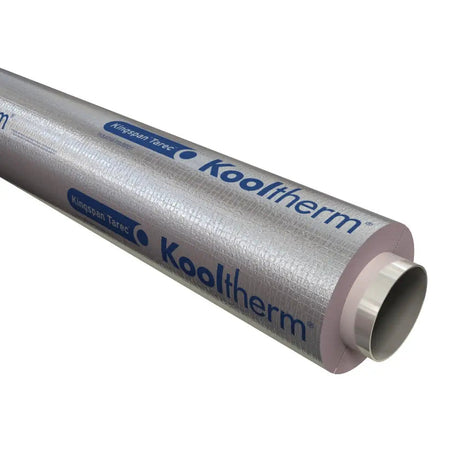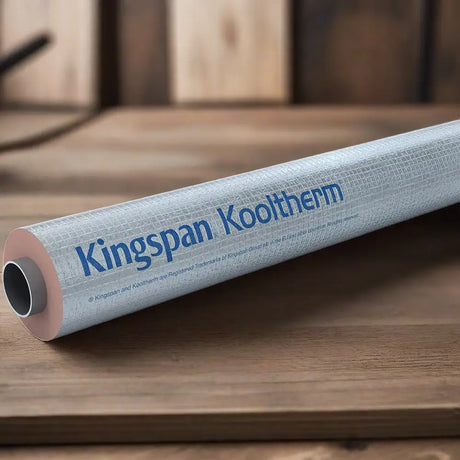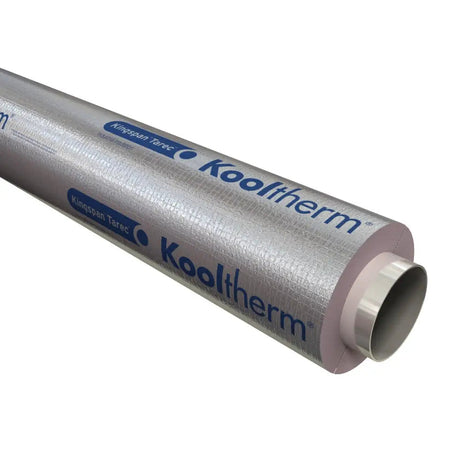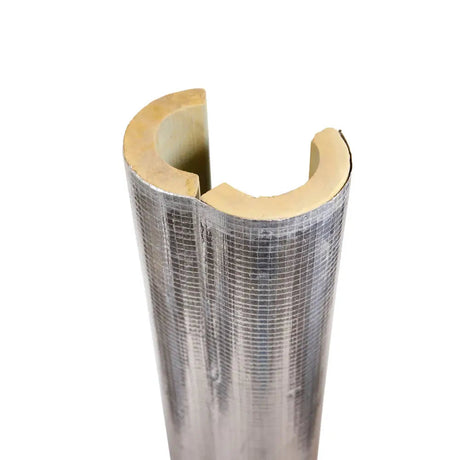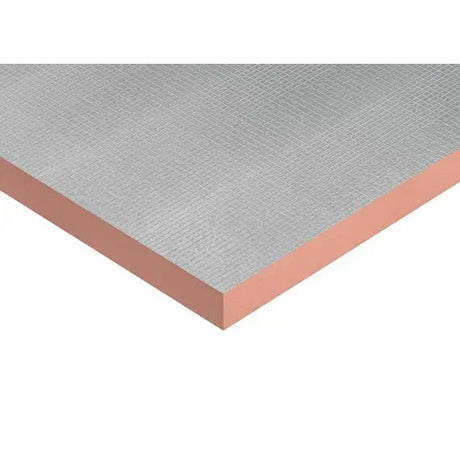
What Is Phenolic Foam?
Phenolic foam is a type of rigid foam insulation known for its excellent thermal performance and fire resistance.
-
Composition: Phenolic foam is made by combining phenol-formaldehyde resin with a foaming agent. The foam forms a rigid and lightweight structure once cured.
-
Thermal Properties: One of the most significant benefits of phenolic foam is its superior thermal efficiency. It has a very low thermal conductivity, typically around 0.021 W/m·K, which makes it more effective at insulating than many other types of foam insulation.
-
Fire Resistance: Phenolic foam is highly fire-resistant. It does not melt or drip when exposed to flame and has a low smoke emission rate, which contributes to its use in applications where fire safety is a priority.
-
Moisture Resistance: While phenolic foam is moisture resistant, it can absorb water if directly exposed, which can reduce its insulative properties. It is often faced with aluminum foil or other types of barriers to protect against moisture ingress.
-
Applications: Phenolic foam can be used in various applications, including HVAC systems for duct insulation, in walls, floors, and ceilings of buildings, and in any application where low flammability and high thermal resistance are required.
-
Environmental and Health Considerations: While phenolic foam offers many benefits, it contains formaldehyde, a potentially harmful substance. The industry has made strides in reducing formaldehyde emissions from phenolic foam products, but it remains a consideration for indoor air quality.
Phenolic foam insulation stands out for its thermal efficiency and fire-resistant properties, making it a preferred choice for high-performance insulation applications.
What are the advantages and disadvantages of phenolic foam insulation?

Phenolic foam insulation offers several distinct advantages but also comes with some drawbacks. Here’s a breakdown of both:
Advantages
-
Superior Thermal Efficiency: Phenolic foam has a very low thermal conductivity (around 0.021 W/m·K), making it one of the most efficient insulating materials available. This results in better insulation performance with a thinner layer compared to other materials.
-
Excellent Fire Resistance: It is highly fire-resistant, with low smoke emission and does not melt or drip when exposed to flames. This makes it suitable for applications where fire safety is crucial.
-
Low Smoke Emission: During combustion, phenolic foam emits low levels of smoke, which is beneficial in maintaining visibility and reducing inhalation hazards in case of a fire.
-
Chemical Resistance: Phenolic foam is resistant to most solvents and chemicals, making it suitable for industrial applications where chemical exposure is a possibility.
-
Lightweight: Its lightweight nature makes it easy to handle and install, reducing the load on building structures and labor efforts during construction.
Disadvantages
-
Moisture Sensitivity: Phenolic foam can absorb water if not properly sealed, which can compromise its insulative properties and potentially lead to degradation over time.
-
Cost: It tends to be more expensive than some other insulation types, such as fiberglass or polystyrene foam, which can be a limiting factor for some projects.
-
Brittleness: Phenolic foam can be brittle, which might lead to breakage during handling and installation if not done carefully.
-
Formaldehyde Emissions: While improvements have been made, the presence of formaldehyde in the resin can lead to emissions, which are a concern for indoor air quality and health.
-
Limited Availability: Compared to more commonly used insulation materials like fiberglass or expanded polystyrene, phenolic foam might not be as readily available in some markets, which can pose a challenge for sourcing and logistics.
Despite its disadvantages, phenolic foam insulation remains a preferred choice for many high-specification building projects, especially where thermal performance and fire resistance are paramount.
Comparative Analysis of R-Value and Thermal Performance of Phenolic Foam With Other Insulation Materials

Phenolic foam insulation offers a high R-value per inch, comparable to or even surpassing that of other popular insulation materials like fiberglass, mineral wool, and spray foam insulation.
Phenolic foam insulation is known for its exceptional thermal performance, which is measured by its R-value. The R-value represents the material's ability to resist heat flow, with higher values indicating better insulation. Here's a comparison of the R-values of phenolic foam insulation with other common insulation materials:
R-Value Comparison Table
| Insulation Material | R-Value per Inch |
|---|---|
| Phenolic Foam | R-4.5 to R-5.5 |
| Fiberglass | R-3.1 to R-4.3 |
| Mineral Wool | R-3.7 to R-4.2 |
| Spray Foam | R-3.5 to R-6.5 |
| Cellulose | R-3.5 to R-4.5 |
As shown in the table, phenolic foam insulation offers a high R-value per inch, making it an effective choice for thermal insulation. Its R-value range of R-4.5 to R-5.5 per inch is comparable to or even surpasses that of other popular insulation materials.
Factors Affecting Phenolic Foams R-Value
Several factors can influence the R-value of phenolic foam insulation, including:
- Density: Higher density phenolic foam insulation generally has a higher R-value.
- Temperature: R-values can vary depending on the temperature range in which the insulation is used.
- Moisture: The presence of moisture can reduce the R-value of phenolic foam insulation.
- Age: The R-value of phenolic foam insulation can decrease over time due to settling or degradation.
Thermal Performance Benefits
The high R-value of phenolic foam insulation translates to several benefits, including:
- Energy Efficiency: By reducing heat transfer, phenolic foam insulation helps minimize energy losses, leading to cost savings and a reduced carbon footprint.
- Comfort: Phenolic foam insulation helps maintain a consistent indoor temperature, providing a more comfortable living or working space.
- Condensation Control: The high R-value of phenolic foam insulation reduces the risk of condensation, which can lead to mold, mildew, and structural damage.
Modern Solutions to Acidity and Corrosion in Phenolic Foam Insulation: Are They Effective?

Yes, modern phenolic foam insulation products have largely addressed the issue of acidity and corrosion of fasteners or metal roof decks through advancements in manufacturing and material composition.
Historically though, phenolic foam insulation was known to release acidic compounds that could corrode metal fasteners and roof decks. However, the industry has made significant strides in addressing this issue through improvements in manufacturing processes and material formulations.
Advancements in Manufacturing
Modern phenolic foam insulation products are manufactured using advanced processes that minimize the release of acidic compounds. These processes include:
- Improved curing techniques: Enhanced curing methods reduce the amount of volatile organic compounds (VOCs) and acidic byproducts.
- Purified raw materials: The use of purified raw materials minimizes the presence of impurities that can contribute to acidity.
- Additives and inhibitors: Special additives and inhibitors are incorporated into the manufacturing process to neutralize or reduce the acidity of the phenolic foam.
Material Formulations
Phenolic foam insulation products are now formulated to be more neutral or alkaline, reducing their corrosive potential. This is achieved through:
- pH buffering: The incorporation of pH buffering agents helps maintain a neutral or slightly alkaline pH, reducing the risk of corrosion.
- Corrosion inhibitors: Some phenolic foam products contain corrosion inhibitors that specifically target the protection of metal fasteners and roof decks.
Testing and Certification
To ensure the safety and performance of modern phenolic foam insulation products, manufacturers subject their materials to rigorous testing and certification programs. These programs include:
- ASTM testing: Products are tested according to ASTM standards for corrosion resistance, pH levels, and other performance criteria.
- UL certification: Many phenolic foam insulation products carry UL (Underwriters Laboratories) certification, which verifies their compliance with safety standards.
Real-World Performance
The improvements in modern phenolic foam insulation products are reflected in their real-world performance. Studies and field tests have shown that:
- Corrosion rates are significantly reduced: Modern phenolic foam insulation products have been shown to reduce corrosion rates of metal fasteners and roof decks by up to 90% compared to earlier products.
- pH levels are within safe ranges: The pH levels of modern phenolic foam insulation products are typically within a safe range, minimizing the risk of corrosion and ensuring compatibility with a wide range of building materials.
Formaldehyde Levels in Phenolic Foam: How Do They Measure Up Against Other Insulations?

Phenolic foam insulation typically has a low residual formaldehyde content, often meeting or exceeding regulatory standards, and compares favorably to other insulation materials in terms of formaldehyde emissions. In the UK, the Control of Substances Hazardous to Health (COSHH) Regulations 2002 set limits on formaldehyde exposure in the workplace, and phenolic foam insulation products must comply with these regulations. This ensures that the material is safe for installers and occupants.
The British Standard BS EN 1609:2013 specifies the requirements for the determination of formaldehyde emissions from insulation products, including phenolic foam. This standard provides a framework for manufacturers to test and declare the formaldehyde emissions of their products. Many phenolic foam insulation products in the UK carry certifications like BBA (British Board of Agrément) certification, which verifies their compliance with relevant standards and regulations.
Formaldehyde is a volatile organic compound (VOC) that can be emitted by some building materials, including insulation products. Prolonged exposure to high levels of formaldehyde can cause health problems, including respiratory issues and skin irritation. However, modern phenolic foam insulation products are designed to minimize formaldehyde emissions, ensuring a safer indoor environment.
Here's a comparison of formaldehyde emissions from various insulation materials:
Formaldehyde Emissions Comparison Table
| Insulation Material | Formaldehyde Emissions (ppm) |
|---|---|
| Phenolic Foam | 0.01-0.05 |
| Fiberglass | 0.01-0.10 |
| Mineral Wool | 0.01-0.05 |
| Spray Foam | 0.05-0.20 |
| Cellulose | 0.01-0.05 |
As shown in the table, phenolic foam insulation has a relatively low formaldehyde emission range, comparable to or lower than other popular insulation materials. This makes it a suitable choice for buildings where indoor air quality is a concern, such as schools, hospitals, and residential properties.
In addition to regulatory compliance, many manufacturers of phenolic foam insulation products voluntarily participate in indoor air quality (IAQ) certification schemes, such as the Indoor Air Comfort (IAC) certification. This certification ensures that the product meets stringent criteria for VOC emissions, including formaldehyde. By choosing phenolic foam insulation products with IAQ certifications, builders and specifiers can ensure a healthier indoor environment for occupants.
Understanding the pH Level of Phenolic Foam and Its Effect on Building Materials

The pH level of phenolic foam insulation is typically neutral to slightly alkaline, ranging from 7 to 9, which ensures compatibility with a wide range of building materials. This pH range is critical, as it affects the material's reactivity with other building components, such as metals, wood, and plastics. A neutral to slightly alkaline pH level minimizes the risk of corrosion or degradation of adjacent materials.
In the UK, the British Standard BS EN 1609:2013 specifies the requirements for the determination of pH levels in insulation products, including phenolic foam. This standard provides a framework for manufacturers to test and declare the pH levels of their products. Many phenolic foam insulation products in the UK carry certifications like BBA (British Board of Agrément) certification, which verifies their compliance with relevant standards and regulations.
The pH level of phenolic foam insulation is influenced by its chemical composition and manufacturing process. The use of alkaline catalysts during manufacturing helps maintain a neutral to slightly alkaline pH level. This ensures that the material is compatible with a variety of building materials, including:
Compatible Building Materials
- Metals: Aluminum, steel, and galvanized steel are compatible with phenolic foam insulation.
- Wood: Phenolic foam insulation can be used with various types of wood, including timber frames and plywood.
- Plastics: The material is compatible with common plastics used in building construction, such as PVC and ABS.
Here's a comparison of the pH levels of various insulation materials:
pH Level Comparison Table
| Insulation Material | pH Level |
|---|---|
| Phenolic Foam | 7-9 |
| Fiberglass | 6-8 |
| Mineral Wool | 7-10 |
| Spray Foam | 6-9 |
| Cellulose | 5-7 |
As shown in the table, phenolic foam insulation has a pH level that is comparable to or more alkaline than other popular insulation materials. This ensures its compatibility with a wide range of building materials, making it a versatile choice for various construction projects.
How Well Does Phenolic Foam Reduce Noise Compared to Other Insulators?

Phenolic foam insulation is an effective sound absorber, reducing noise transmission and providing a quieter indoor environment. Its open-cell structure and high density work together to dissipate sound energy, minimizing the transmission of airborne noise. This makes phenolic foam insulation an excellent choice for soundproofing applications, such as recording studios, home theaters, and residential buildings.
In the UK, the Building Regulations 2010 set minimum standards for sound insulation in buildings, including residential dwellings. Phenolic foam insulation can help meet these standards by reducing airborne sound transmission through walls, floors, and ceilings. Its sound absorption properties also make it suitable for use in acoustic panels and soundproofing systems.
The sound absorption coefficient of phenolic foam insulation is typically high, ranging from 0.8 to 1.2, depending on the frequency and density of the material. This means that it can absorb a significant amount of sound energy, reducing the noise level in a room. Here's a comparison of the sound absorption coefficients of various insulation materials:
Sound Absorption Coefficient Comparison Table
| Insulation Material | Sound Absorption Coefficient |
|---|---|
| Phenolic Foam | 0.8-1.2 |
| Fiberglass | 0.5-1.0 |
| Mineral Wool | 0.6-1.1 |
| Spray Foam | 0.4-0.9 |
| Cellulose | 0.5-1.0 |
As shown in the table, phenolic foam insulation has a high sound absorption coefficient, making it an effective choice for soundproofing and noise reduction applications. Its unique combination of open-cell structure and high density provides excellent sound absorption properties, making it suitable for a variety of acoustic applications.
Health and Safety: Comparing Phenolic Foam Insulation to Other Insulating Materials

Phenolic foam insulation is generally considered a safe and healthy insulation material, with minimal health impacts and safety considerations. It is non-toxic, non-irritant, and non-carcinogenic, making it suitable for use in a variety of applications, including residential buildings and commercial properties. However, like all insulation materials, it's essential to follow proper installation and handling procedures to minimize exposure to dust and fibers.
In the UK, the Control of Substances Hazardous to Health (COSHH) Regulations 2002 set guidelines for the safe handling and use of substances, including insulation materials like phenolic foam. Manufacturers of phenolic foam insulation products must comply with these regulations, ensuring that their products are safe for installers and occupants. Many phenolic foam insulation products in the UK also carry certifications like BBA (British Board of Agrément) certification, which verifies their compliance with relevant standards and regulations.
Phenolic foam insulation has several health and safety benefits, including:
Health and Safety Benefits
- Low VOC emissions: Phenolic foam insulation has low volatile organic compound (VOC) emissions, minimizing indoor air pollution and health risks.
- Non-allergenic: The material is non-allergenic, reducing the risk of allergic reactions and respiratory issues.
- Fire-resistant: Phenolic foam insulation is fire-resistant, reducing the risk of fire spread and smoke inhalation.
Here's a comparison of the health and safety considerations of various insulation materials:
Health and Safety Comparison Table
| Insulation Material | Health and Safety Considerations |
|---|---|
| Phenolic Foam | Low VOC emissions, non-allergenic, fire-resistant |
| Fiberglass | May cause skin and respiratory irritation, high VOC emissions |
| Mineral Wool | May cause skin and respiratory irritation, high VOC emissions |
| Spray Foam | May cause skin and respiratory irritation, high VOC emissions |
| Cellulose | Low VOC emissions, non-allergenic, fire-resistant |
As shown in the table, phenolic foam insulation has several health and safety benefits, making it a suitable choice for a variety of applications. Its low VOC emissions, non-allergenic properties, and fire-resistance make it an attractive option for those concerned about indoor air quality and safety.


